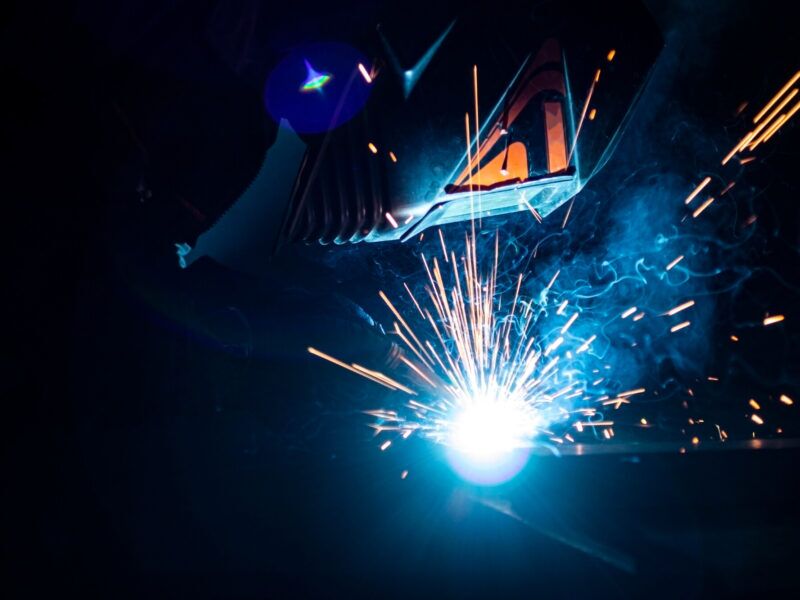Your Complete Manual to Preventing Weld Undercut Like a Pro
Your Complete Manual to Preventing Weld Undercut Like a Pro
Blog Article
Grasping the Art of Welding: How to Prevent Undercut Welding Issues for Flawless Construction Outcomes
By comprehending the origin creates of undercut welding and implementing reliable strategies to stop it, welders can raise their craft to new degrees of quality. In the search of perfect fabrication outcomes, mastering the art of welding to stay clear of undercut concerns is not just an ability yet a need for those making every effort for perfection in their job.
Recognizing Undercut Welding

To stop undercut welding, welders ought to make certain proper welding specifications, such as adjusting the existing, voltage, traveling speed, and preserving the correct electrode angle. Furthermore, using the proper welding method for the details joint setup is crucial. Employing weaving movements or backstepping methods can aid make sure correct weld metal deposition and minimize the likelihood of undercut development. Regular inspection of welds during and after the welding procedure is additionally crucial to capture any undercut early and make essential changes to avoid further problems. Preventing weld undercut. By understanding the reasons for undercut welding and executing precautionary actions, welders can achieve premium, structurally sound welds.
Reasons of Undercut in Welding
Comprehending the factors that contribute to undercut in welding is vital for welders to produce high-grade, structurally audio welds. Undercutting takes place when the weld metal does not properly fill up the groove created between the base metal and the formerly deposited weld metal. Numerous elements can result in undercut in welding. One typical cause is too much warmth input. Welding at high temperature levels for extensive durations can lead to the base metal melting greater than preferred, causing undercut. Poor welding current or inaccurate welding speed can likewise add to undercut. Inadequate current may not provide adequate heat to thaw the base and filler metals appropriately, while too much rate can protect against correct fusion, causing undercut. Furthermore, inappropriate electrode angles or wrong lantern adjustment methods can develop areas of low weld steel deposition, advertising undercut. Comprehending these reasons and executing appropriate welding strategies can help protect against damaging issues, making sure resilient and solid welds.
Strategies to avoid Undercutting

To alleviate the risk of undercutting in welding, welders can use critical welding strategies targeted at boosting the quality and integrity of the weld joints. One efficient method is to adjust the welding criteria, such as voltage, existing, and take a trip rate, to guarantee appropriate heat input and deposition. Maintaining a suitable electrode angle and making sure consistent traveling rate can additionally assist avoid undercut. Furthermore, utilizing the proper welding strategy for the details joint arrangement, such as weave or stringer grains, can contribute to lowering damaging. Preventing weld undercut.
Additionally, correct joint preparation, consisting of making certain tidy base products complimentary of pollutants and making use of the suitable welding consumables, is critical in stopping undercut flaws. Using back-step welding techniques and regulating the weld grain profile can additionally aid distribute heat uniformly and decrease the threat of undercut. Regular inspection of the weld joint during and after welding, as well as carrying out quality guarantee steps, can help in attending to and discovering damaging concerns quickly. By implementing these strategies diligently, welders can attain flawless construction results with marginal undercut defects.
Value of Correct Welding Parameters
Picking and keeping suitable welding criteria is essential for accomplishing effective welds with minimal problems. Welding parameters refer to variables such as voltage, existing, take a trip speed, electrode angle, and securing gas flow price that straight affect the welding process. These specifications need to be very carefully adjusted based upon the sort of material being welded, its thickness, and the welding strategy employed.
Proper welding specifications make sure the ideal amount of warmth is put on thaw the base steels and filler material evenly. If the specifications are set expensive, it can bring about excessive warm input, creating distortion, spatter, or burn-through. On the other hand, if the official site parameters are too reduced, incomplete blend, lack of infiltration, or damaging might happen.
Top Quality Assurance in Welding Procedures

Verdict
To conclude, mastering the art of welding needs a comprehensive understanding of undercut welding, its causes, and strategies to stop it. By ensuring proper welding criteria and executing quality control practices, flawless fabrication outcomes can be achieved. It is essential for welders to browse around this site continually make every effort for excellence in their welding operations to prevent undercut concerns and generate top quality welds.
Undercut welding, a typical issue in welding processes, occurs when the weld metal does not appropriately fill up the groove and leaves a groove or anxiety along the welded joint.To prevent undercut welding, welders must ensure appropriate welding criteria, such as changing the existing, voltage, traveling rate, and keeping the right electrode angle. Inadequate welding present or incorrect welding speed can additionally contribute to undercut.To mitigate the threat of damaging in welding, welders can utilize strategic welding strategies aimed at boosting the top quality and integrity of the weld joints.In final thought, grasping the art of welding requires a complete understanding of undercut welding, its reasons, and strategies to avoid it.
Report this page